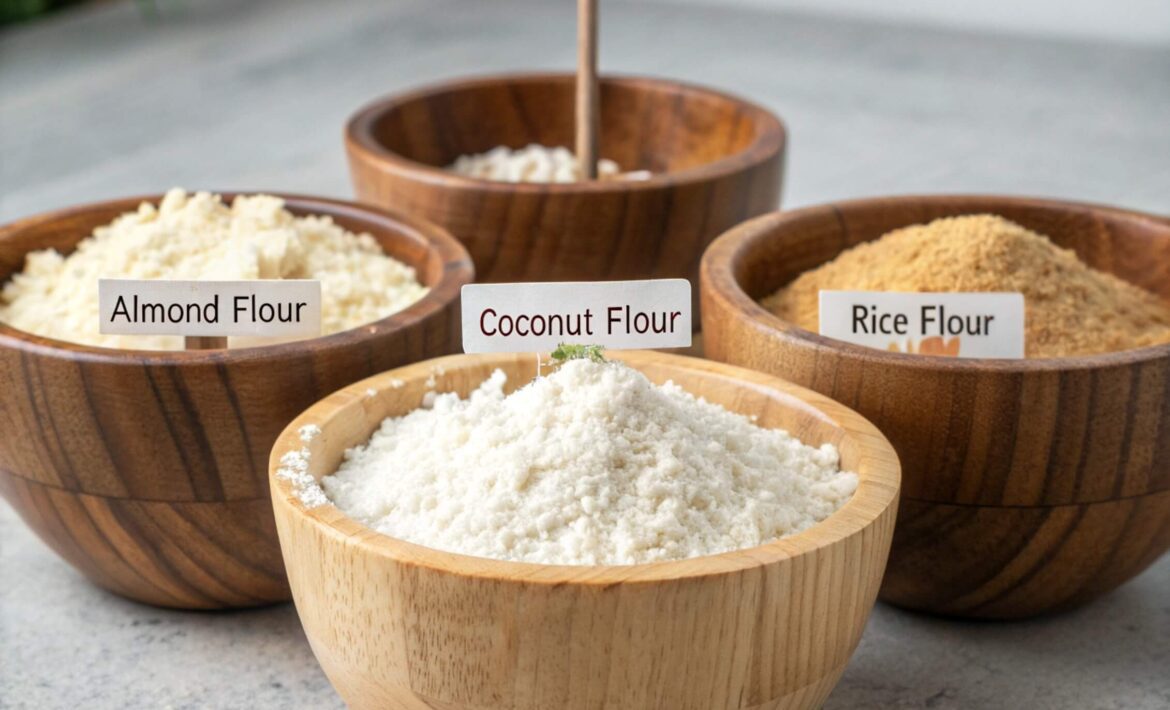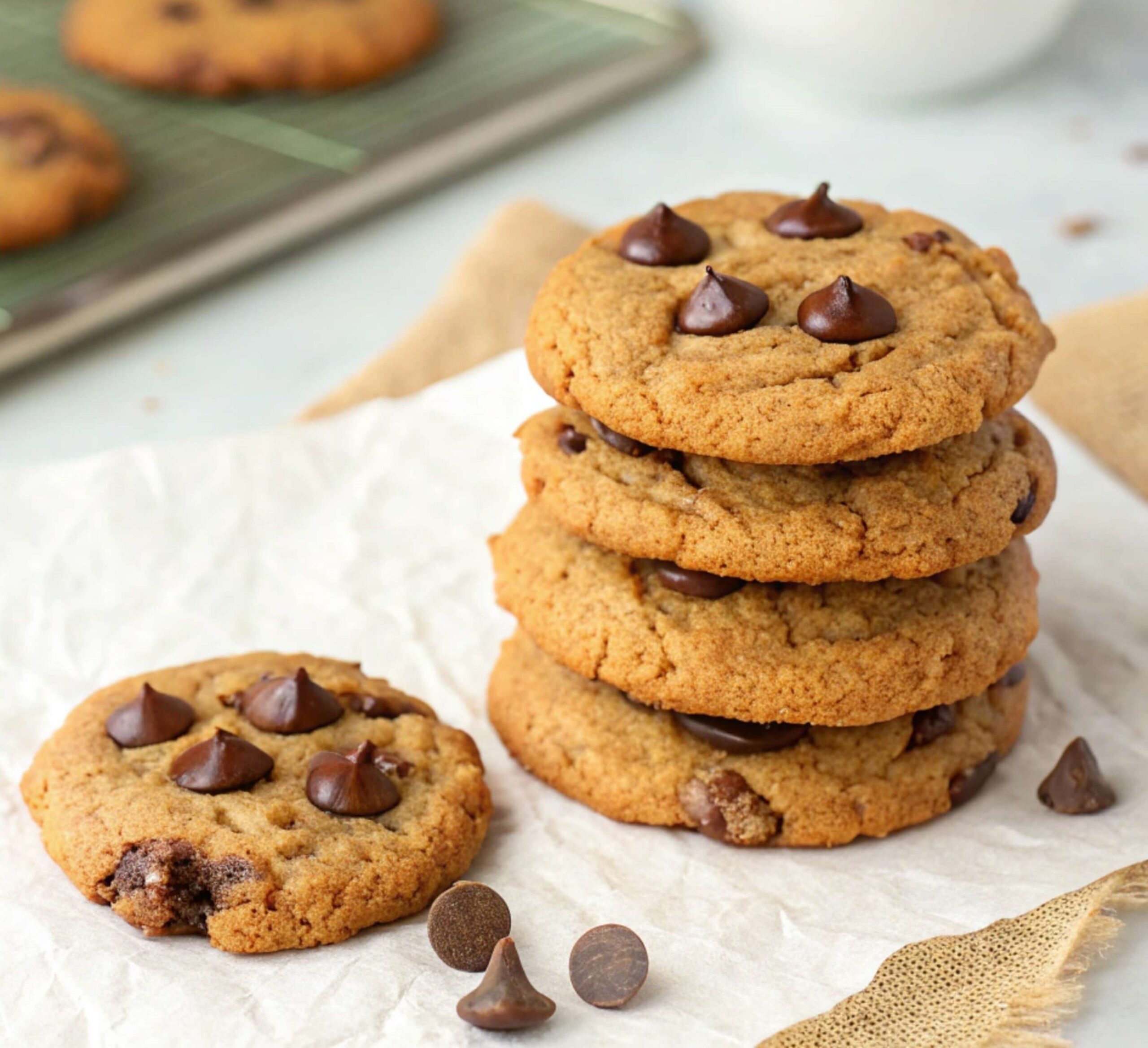Gluten-free dessert recipes open doors to sweet treats that everyone can enjoy, whether you have celiac disease, gluten sensitivity, or want to try something new. These recipes replace traditional wheat flour with alternatives like almond flour, rice flour, or coconut flour to create desserts that taste just as good as their gluten-containing cousins.
You might wonder why gluten-free baking matters so much. For people with celiac disease, eating gluten can cause serious health problems, including stomach pain, bloating, and long-term intestinal damage. Others deal with gluten sensitivity that makes them feel tired, foggy, or uncomfortable after eating wheat products. Many families have at least one person who needs gluten-free options, making these recipes valuable for everyone.
Common questions about gluten-free desserts include: “Will they taste different?” and “Are they harder to make?” The truth is that gluten-free desserts can taste amazing when you use the proper techniques and ingredients. Some even taste better than traditional versions because alternative flours add unique flavors and textures.
Popular gluten-free dessert recipes include chocolate chip cookies made with almond flour, flourless chocolate cake, rice flour brownies, and coconut macaroons. These treats satisfy sweet cravings without causing digestive problems for sensitive people.
The main ingredients in gluten-free desserts include alternative flours such as almond, rice, or coconut flour, binding agents like xanthan gum or eggs, natural sweeteners, and traditional baking ingredients like butter, vanilla, and baking powder. These ingredients work together to create the texture and structure that gluten typically provides.
What Makes Gluten-Free Desserts Different
Gluten-free desserts work differently than regular baked goods because they lack the protein that gives traditional desserts their structure. Gluten acts like a stretchy net that traps air, creating chewy, bouncy textures in regular cookies, cakes, and breads.
Without gluten, your desserts need other ingredients to hold everything together. This means using binding agents like xanthan gum, guar gum, or extra eggs. Alternative flours also behave differently from wheat flour. Almond flour adds moisture and richness, while rice flour creates a slightly grittier texture. Coconut flour absorbs a significant amount of liquid, so recipes often require more eggs or milk to compensate for this.
The taste of gluten-free desserts can be more appealing than that of regular ones. Almond flour brings a nutty sweetness, coconut flour adds tropical notes, and rice flour keeps flavors clean and straightforward. Many people prefer these complex flavors over the taste of plain wheat flour.

Essential Gluten-Free Dessert Ingredients
Flour Alternatives That Work
You need the right flours to make gluten-free dessert recipes that taste good. Almond flour works best for cookies and cakes because it adds moisture and creates tender textures. It costs more than regular flour, but the nutty flavor makes desserts taste more decadent and more indulgent. Rice flour gives you a clean taste that won’t compete with chocolate or fruit flavors. It works well when mixed with other flours, but can make desserts gritty if used in excess.
Coconut flour acts like a sponge, soaking up liquid quickly. You only need small amounts – usually one-quarter to one-third the amount of regular flour. Tapioca flour and potato starch help bind ingredients together, making desserts chewy and moist. Gluten-free flour blends from the store typically combine several flours and often include xanthan gum, which is already mixed in.
Binding Agents and Sweeteners
Xanthan gum replaces the stretchy properties of gluten in gluten-free dessert recipes. Use only small amounts—about one-fourth of a teaspoon per cup of flour. Too much makes desserts gummy and unpleasant. Eggs serve as natural binders, adding structure. Many gluten-free recipes use extra eggs to help everything stick together.
Natural sweeteners, such as maple syrup, honey, and coconut sugar, add sweetness while keeping desserts moist and tender. These liquid sweeteners work exceptionally well in gluten-free baking because they prevent dryness that can happen with alternative flours.
Easy Gluten-Free Chocolate Desserts
Simple Chocolate Cookie Recipes
Chocolate cookies made with almond flour create decadent, chewy treats that satisfy any sweet tooth. Mix two cups of almond flour with one-fourth cup of cocoa powder, one egg, one-third cup of melted coconut oil, and one-fourth cup of maple syrup. Add a pinch of salt and 1/2 teaspoon of vanilla extract. The dough will feel different from regular cookie dough – it will be more moist and dense.
Roll the dough into balls and flatten them slightly on a baking sheet. These cookies won’t spread much during baking, so shape them how you want them to look when done. Bake at 350°F for 10-12 minutes, or until the edges appear set.
Flourless Chocolate Cake Success
Flourless chocolate cake ranks as one of the easiest gluten-free dessert recipes because it never uses flour in the first place. Melt eight ounces of dark chocolate with half a cup of butter. Beat four eggs with half a cup of sugar until light and fluffy. Fold the melted chocolate mixture into the eggs slowly to avoid cooking them.
Pour the batter into a greased 8-inch pan and bake at 375°F for 25 minutes. The center should still wiggle slightly when you shake the pan. This cake improves after sitting overnight, as the flavors develop and the texture becomes more fudgy.
Fruit-Based Gluten-Free Desserts
Apple and Berry Crumbles
Fruit crumbles make perfect gluten-free dessert recipes because they focus on natural sweetness and require simple techniques. Mix four cups of sliced apples with two tablespoons of coconut sugar and a pinch of cinnamon. For the topping, combine 1 cup almond flour, 1/3 cup rolled oats, 1/4 cup coconut oil, and two tablespoons maple syrup. The mixture should clump together when you squeeze it.
Spread the fruit in a baking dish and sprinkle the crumble topping over it. Bake at 375°F for 30-35 minutes, until the fruit bubbles and the topping turns golden brown. Berry versions work the same way – use strawberries, blueberries, or a mix of berries instead of apples.
Seasonal Fruit Desserts
Summer brings opportunities for fresh peach crisps and cherry cobblers made with gluten-free flour blends. Stone fruits need less added sugar because they’re naturally sweet. Winter calls for pairing pears and cranberries that balance tart and sweet flavors. These desserts taste better when you use fruits that are in season because they have more flavor and cost less.
No-Bake Gluten-Free Dessert Recipes
Energy Balls and Truffle-Style Treats
No-bake desserts solve many gluten-free baking challenges because they don’t require a perfect texture or rising. Date and nut energy balls are made by combining one cup of pitted dates, one cup of almonds, two tablespoons of cocoa powder, and a pinch of salt in a food processor. Process until the mixture forms a cohesive mass when pressed. Roll into balls and refrigerate for an hour.
Coconut macaroons require only four ingredients: three cups of shredded coconut, three egg whites, one-third cup of honey, and half a teaspoon of vanilla. Mix all the ingredients and drop spoonfuls onto parchment paper. Bake at 325°F for 15-20 minutes, or until golden.
Troubleshooting Common Gluten-Free Baking Problems
Fixing Texture Issues
Crumbly gluten-free dessert recipes often require additional binding agents or moisture to achieve a smooth texture. Add an extra egg or two tablespoons of liquid to help ingredients stick together. Dry desserts benefit from the addition of fat, such as melted butter or coconut oil. Dense textures often indicate that you used too much flour or not enough leavening agents, such as baking powder.
Preventing Common Mistakes
Measure gluten-free flours by weight whenever possible, as they pack differently than wheat flour. Let batters rest for 10-15 minutes before baking to allow flours to hydrate properly. Don’t overmix – gluten-free batters can become gummy if you stir too much after adding liquid ingredients.
Successful gluten-free dessert recipes depend on understanding how alternative ingredients work together. Begin with simple recipes, such as flourless chocolate cake or fruit crumbles, before progressing to more complex desserts. Keep your pantry stocked with almond flour, a good gluten-free flour blend, and xanthan gum for best results.
These desserts prove that avoiding gluten doesn’t mean giving up sweet treats. With the right ingredients and techniques, you can create desserts that everyone will enjoy, whether they need gluten-free options or not. Your kitchen can produce amazing desserts that happen to be gluten-fre,e rather than gluten-free desserts that happen to be edible.











